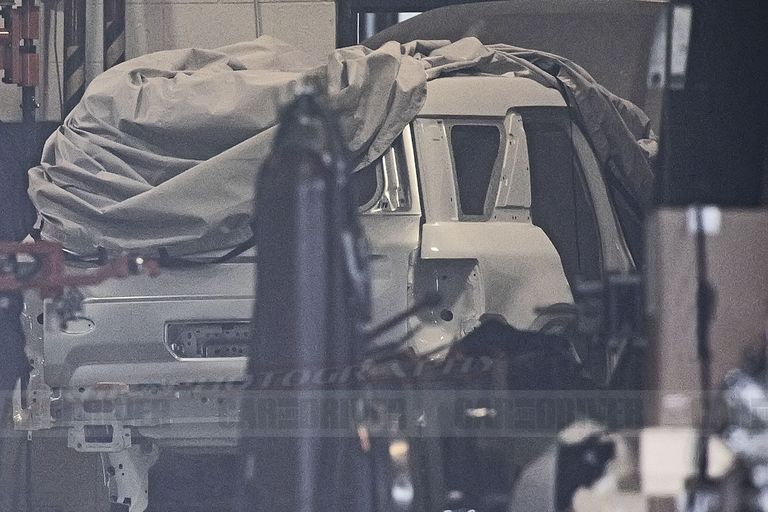-
Posts
5,873 -
Joined
-
Last visited
-
Days Won
5
Content Type
Profiles
Forums
Gallery
Downloads
Store
Posts posted by J-150
-
-
6 hours ago, SoonerLS said:
Ford already took that shot. Whether or not it was successful, I couldn't tell you.
Yes I know. It was an example to explain to our socialist friend how he got Wayne Gretzky's quote wrong.
-
6 minutes ago, akirby said:
Thats the issue for me. I understand that compensation is market based even if it seems too high. But these golden parachutes for executives who get fired for poor performance defies logic.
Also part of the contract.
-
54 minutes ago, grbeck said:
One of the complaints has been that executives still get a fat payday even if they drive the company right into a ditch.
Depends on the KPI targets that are set.
-
Executive pay packets are a contract between them and the shareholders. They deliver their KPIs, they get the pay packet. They dont and they are fired. They dont get a predetermined wage for showing up like the hourly workforce does.
-
11 hours ago, jpd80 said:
Danny Lawrence, 31, and his wife Catherine, 28, had heard all the bad things about the notorious car manufacturer but they fell in love with the SUV.
That's all you need to read when deciding to be empathetic to their plight.
-
 1
1
-
-
7 hours ago, 7Mary3 said:
My understanding was that the excess capacity was not at a large plant suitable for building Super Duty's. Ford was able to not only consolidate all Super Duty production at KTP, but also free up other truck plants for exclusive F-150 production. Remember 1999 was when the large pickups became a different platform than the F-150.
Meanwhile, Ontario Truck Plant was shut down, reducing pickup plants from 4 to 3.
This is why I ask. Capacity was there.
IMO, it was about glamour. Get rid of heavy trucks, New Holland and such to pay for the Euro luxury cars. I dont think it was about capacity nor margins.
-
 1
1
-
-
1 hour ago, 7Mary3 said:
It is very easy to understand. Ford found they could make a lot more money putting their resources into the Super Duty line than they could in heavy trucks.
And yet no one can explain how one had to be cancelled for the other to exist. There was excess capacity all over North America at the time.
-
12 hours ago, PoisonIvy said:
Aren't they supposed to be about the same width/length interior wise? I have a feeling they'll share quite a bit of the interior pieces. Just my hunch.
Buttons, dials, switches, gauges for sure. But the arrangement on the dash and door skins would differ.
-
 1
1
-
-
3 hours ago, twintornados said:
The decision to sell off the "Heavy Truck" division lands squarely on the shoulders of then-CEO Jac "the knife" nASSer...at the time, the division was turning a small ROI but it was still "in the black" for the operation, Jac claimed at the time that Ford could earn more just by putting that operations $$$ in a bank. From what I have read, Ford held 9% of the "heavy truck" market and Frieghtliner held over 29%. It made perfect sense for Frieghtliner.....
Here we are, all these years later...and Ford's Cargo line does well all over the globe but is strangely absent in the North American market.IMO, the heavy truck could have run at break even and still been a good deal. It was a brand builder and had a spin off effect, making the smaller F Series more legitimate as trucks.
The same would be true if it never went away. To know that your F550 tow truck had the same DNA as a class 8 tractor would go further than any claims Ram could make.
-
 2
2
-
-
17 hours ago, rperez817 said:
As the saying goes, you miss 100% of the shots you don't take.
Including shots fired on the wrong net.
Great quote but not what Wayne Gretzky was talking about.
Example, Ford has a small diesel suitable for a half ton. There is market demand. Ram is doing it and GM will be offering one shortly. Do you take THAT shot?
-
17 hours ago, ausrutherford said:
UAW doesn't have the money to pay its members for that long.
And most of the workers cant survive on $250/wk for that long.
-
-
41 minutes ago, atomcat68 said:
Someone did send them a middle finger emoji...
I'm sure GM and FCA have received their fair share of the same.
-
3 hours ago, twintornados said:
Odd statement since Ford doesn't build that anymore...I also noticed that no one drove an EXP.
Point is, as a marketing tool it's as bad as the Chevy "real people".
Oh you hate Ford? Here, drive a GT. Not, hey drive the vehicles that make you hate Ford.
-
 1
1
-
-
Funny video. But I noticed they didn't have anyone driving a DCT Focus.
-
Ranch-Edge-Ro
-
 1
1
-
-
1 hour ago, rperez817 said:
Two things that define the future of the U.S. new automotive market. 1.) Trucks. 2.) BEV.
Put those 2 things together and it's clear FCA and Toyota will have to get on board with BEV pickups soon or face the prospect of becoming irrelevant in the U.S. pickup truck market. Both companies are successful now with ICE powered pickup trucks, but that era is on its last hurrah.
Toyota will do what Toyota always does. They watch to see what everyone else is doing then then join in only after they see if there is demand.
Chrysler has been much the same for the past 25 years.
-
21 hours ago, T-dubz said:
The problem is what do you call the vehicle the sub brand is named after? Is the bronco going to be the bronco bronco? ???
Oreo Oreo is just Oreo.
Which makes room for Golden Oreo,, Oreo Double Stuff, Oreo Fudge, etc.
-
1 hour ago, Twin Turbo said:
Thank you for the info.........using the Mustang logo/name does not sit well with me, but it is what it is

I dont like it either, but Jeep has pulled off putting their name on a Fiat 500.
Porsche is selling a helluva lot of tarted up Volkswagen SUVs and still asking an insane amount for their cars.
It can be done with success, as long as the base brand remains class leading.
-
 1
1
-
-
Looks like a Korean design.
-
On 9/7/2019 at 9:01 PM, jpd80 said:
Exactly,
Nissan made such a big deal of the diesel Titan that now it faces the public humiliation of ending it.
Had it just been an option on the Titan, Nissan could have quietly dropped it.
They had one, singular point of difference. Were they not supposed to promote that?
-
18 hours ago, PREMiERdrum said:
This new F-150 plus continued aggressive incentives from Ram is going tor make things much, much worse for the boys at the RenCen.
Is it time for Truck Month again?
-
8 minutes ago, fuzzymoomoo said:
The answer to a question nobody asked
And yet Ford, GM and Dodge have offered "heavy half" payload packages for decades. So yeah, someone did ask the question... and it was answer by Detroit many times.
Nissan has been struggling to find a niche they could exploit. This was a valid niche. But they guessed wrong on the take rate.
Kind of like when Toyota tried a flare side and failed miserably.
-
Just now, silvrsvt said:
Right, but the issue is this-if your developing a new ICE now in 2019 and it comes out in say 2022-you'll be lucky to have 10 years to recoup your investment on it. The window for clean sheet ICE engines is rapidly closing as time goes on.
Depending on costs and improvement in range (300 mile or so), you'll see a rapid adoption of BEVs in the 2030s, going by current trends (keeping a new car for 10 years or so, etc)
Why only 10 years? BEV penetration won't go from 20-30% in 2030 to 100% in 2031




Baby Bronco spotted testing
in Ford Motor Company Discussion Forum
Posted
I have high hopes for the Baby Bronco. The compact Jeep offerings would be compelling, if not for the poor quality, poor driving dynamics, abysmal interiors and underpowered engines. All the things Ford can do better on.